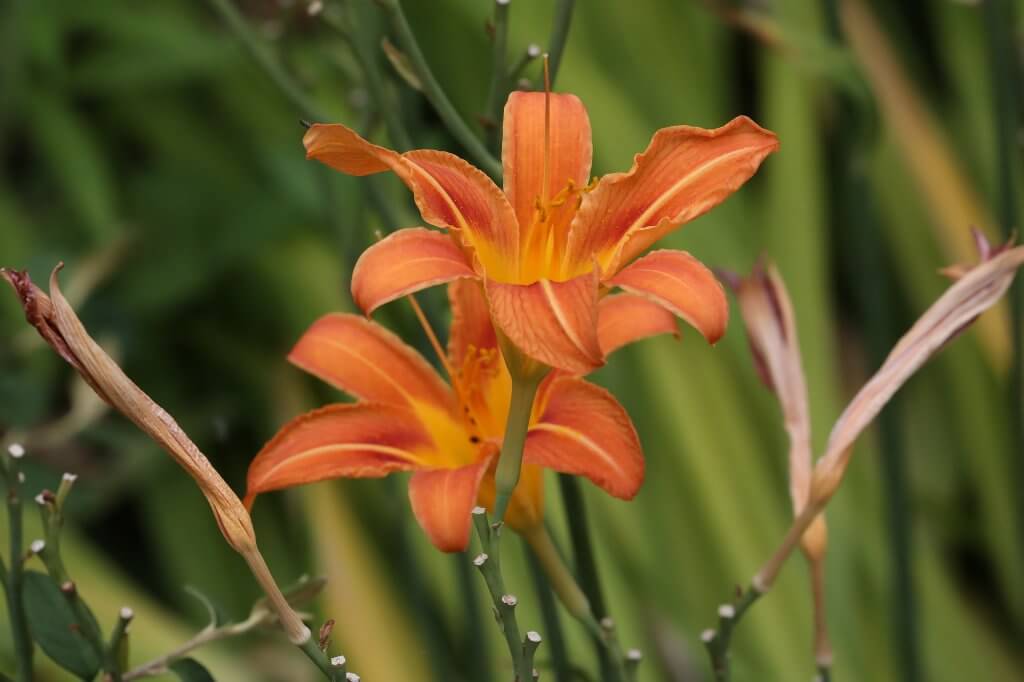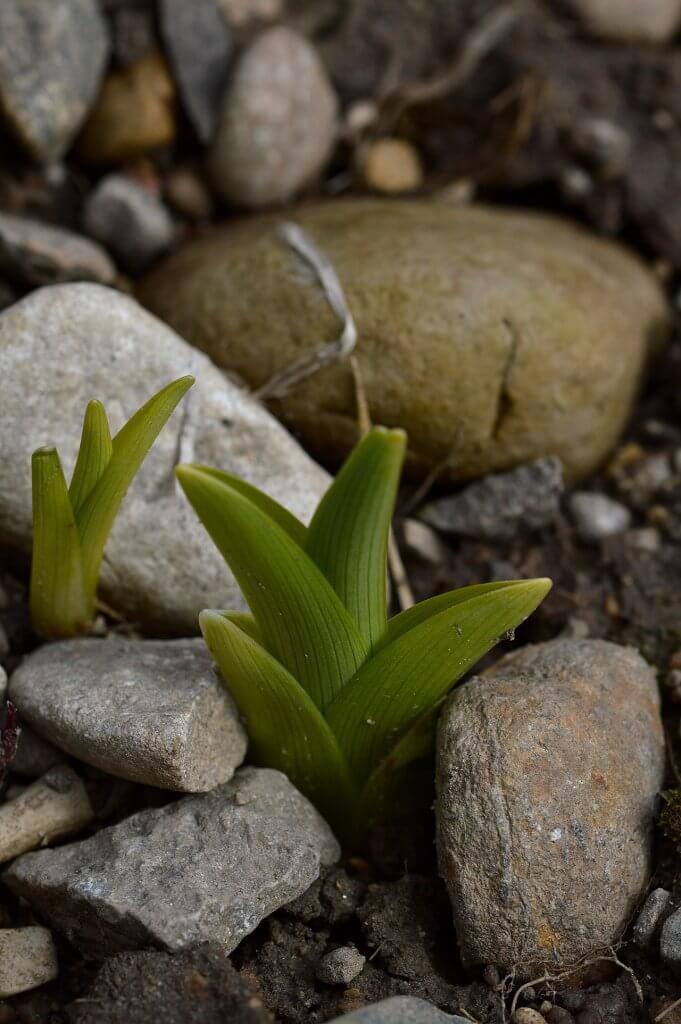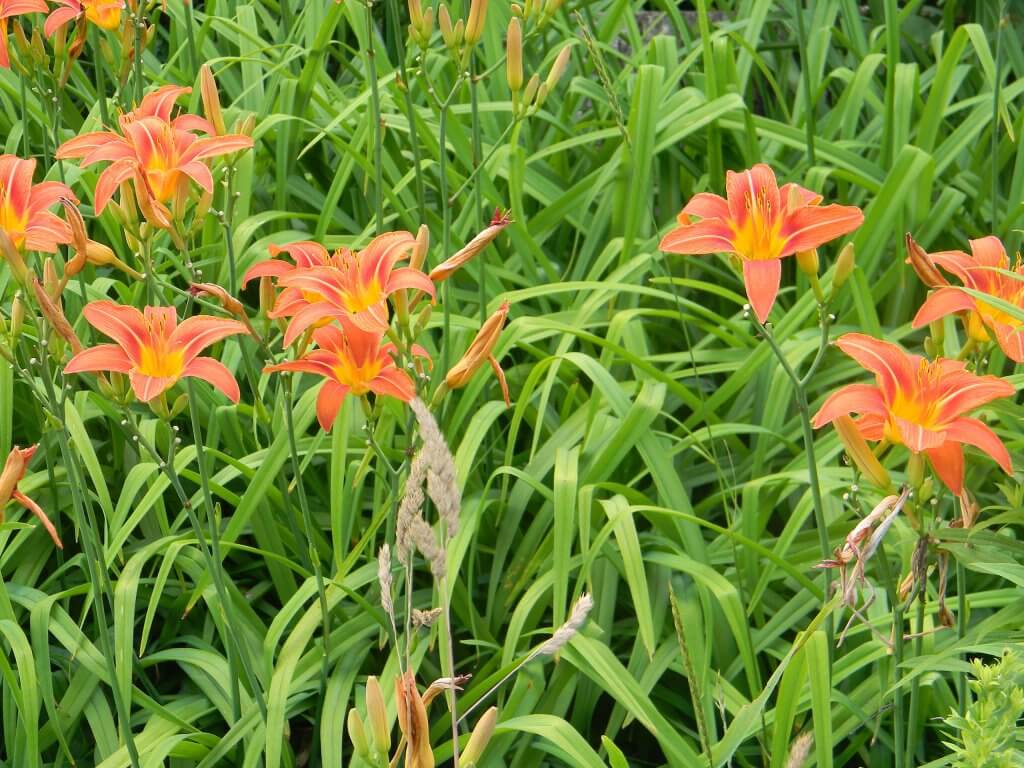Day lily (Hemerocallis fulva), commonly known as orange day lily or tiger daylily, is a bright, showy and greatly recognisable perennial. They are a common feature across the US, although originally native to Asia. Day lilies have spread throughout the world, through trade and their use as an ornamental garden plant.
It has a varied assortment of names, some that hint at its usual habitat, including ditch lily and railroad daylily. Their ability to grow quickly and spread easily via rhizomes has caused them to move from cultivated gardens and into the wild. They can now be found in abundance across most of the US, along forest and field edges.

The flowering stalks of day lilies can reach up to 120cm, with long broad leaves radiating from the plants center. Numerous tubers form underground amongst a tangle of ropey roots. Leaving one or two tubers behind when foraging will guarantee the plant can regrow the following year.
Much like the day flower plant. Day lilies are so called because each flower blooms only once before withering away. They tend to have a bright orange or tawny coloring, with six large petals opening to reveal the lengthened stamens, much like a true lily.
Edible parts and other uses

The flowers, although brightly colored, are perfectly edible, our innate senses usually telling us to avoid such colors. The young leaf shoots, buds and tubers of day lilies can also be eaten. Their flavoring often compared to asparagus with the smallest hint of allium.
The tubers, when washed and scrubbed, can be roasted and generally used in the same manner as a potato. The shoots and buds can be eaten raw, and added straight into salad dishes. The ornate flowers can also be eaten raw, making them excellent edible garnishes for sweet desserts and even cocktails. Whilst many foragers choose to eat raw day lily, those with a more sensitive stomach may choose to blanch or cook each part of the plant before eating.
Cautions
Day lilies are relatively easy to identify because of the dramatic, orange flowers. However with many plants receiving a mixture of cross over names, care must be taken to identify the plant by sight and not by name. Another bright orange but inedible plant by the name tiger lily (Lilium lancifolium) exists. A true lily, it is of a different genus and has many other distinguishing features, but the similarity in name could cause confusion.
A small number of foragers have experienced sensitivities and stomach upset from eating day lilies. The problem appears to lie in certain day lily varieties that have been bred for specific characteristics, such as larger flowers. To be safe, the best approach would be to blanch the plant within 1-2 changes of water to remove any possible toxins that could be present. And as with any plant, foraged or not, moderation is key.
Foraging
Look for them along sunny woodland or forest edges, and even your own yard or land, as a patch may likely by growing right under your nose.
The tuber should be collected before the flowers appear, so these can be harvested from late fall right through until early spring. The young shoots and buds can be harvested in spring, and the flowers can be plucked from the plant throughout the summer.

Did you know…
Despite their name, day lilies are not actually related to true lilies. Whilst the large flower greatly resembles the showy style of the lily, they do not belong to the same genus.
Conclusion
Not only a beautiful landscape plant, but a unique edible too. Whether foraging along disused railway roads or choosing to grow your own at home. The day lily can provide a great yield of varied produce to use in the kitchen.
Written by Hannah Sweet
Hannah is a freelance writer and graphic designer from the UK. With a penchant for travelling, photography and all things botanical, she enjoys writing about a wealth of topics and issues, from conservation and slow living, to design and travel. Learn more about her writing and design services at www.sweetmeanders.co
Many of our readers find that subscribing to Eat The Planet is the best way to make sure they don't miss any of our valuable information about wild edibles.
See our privacy policy for more information about ads on this site






